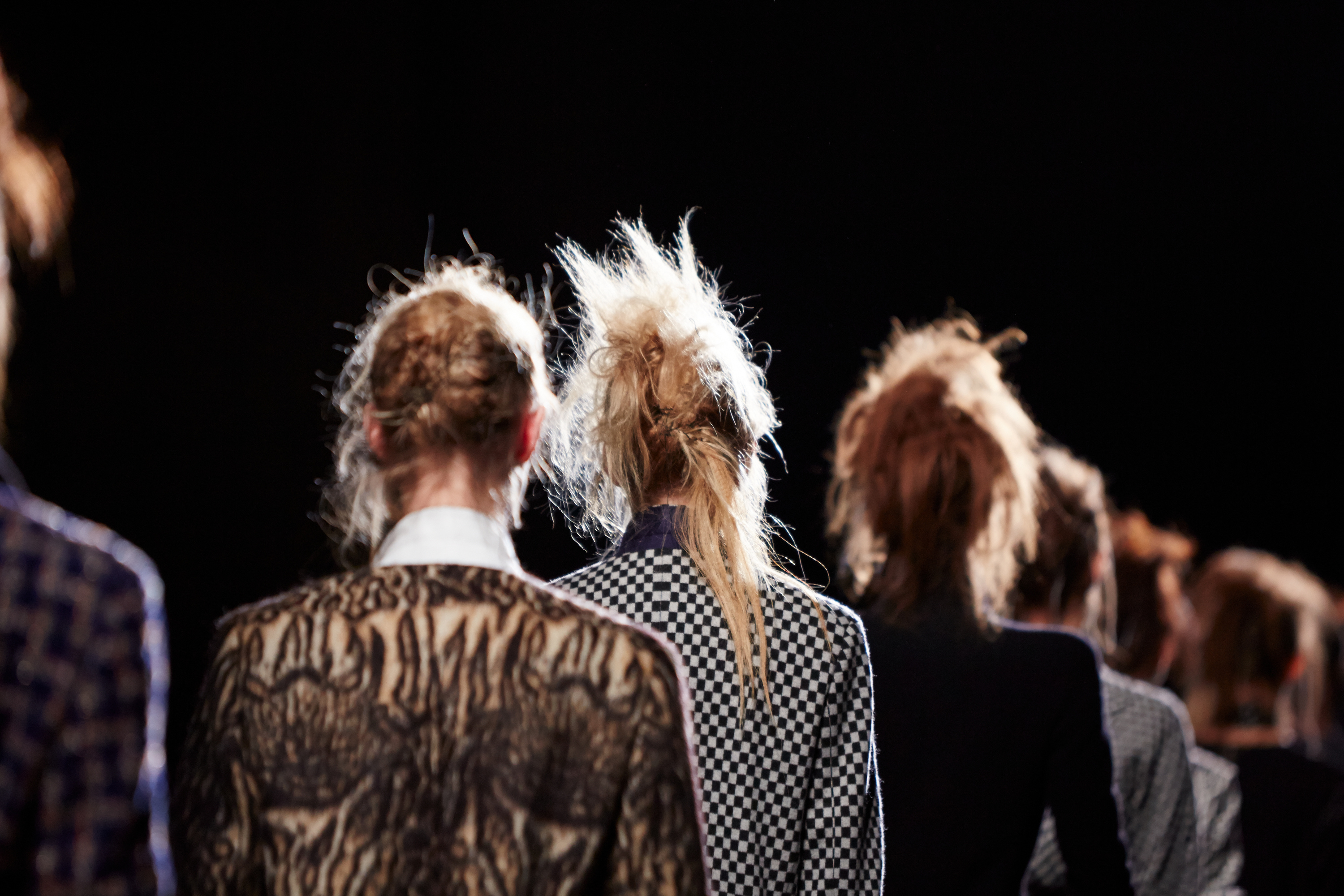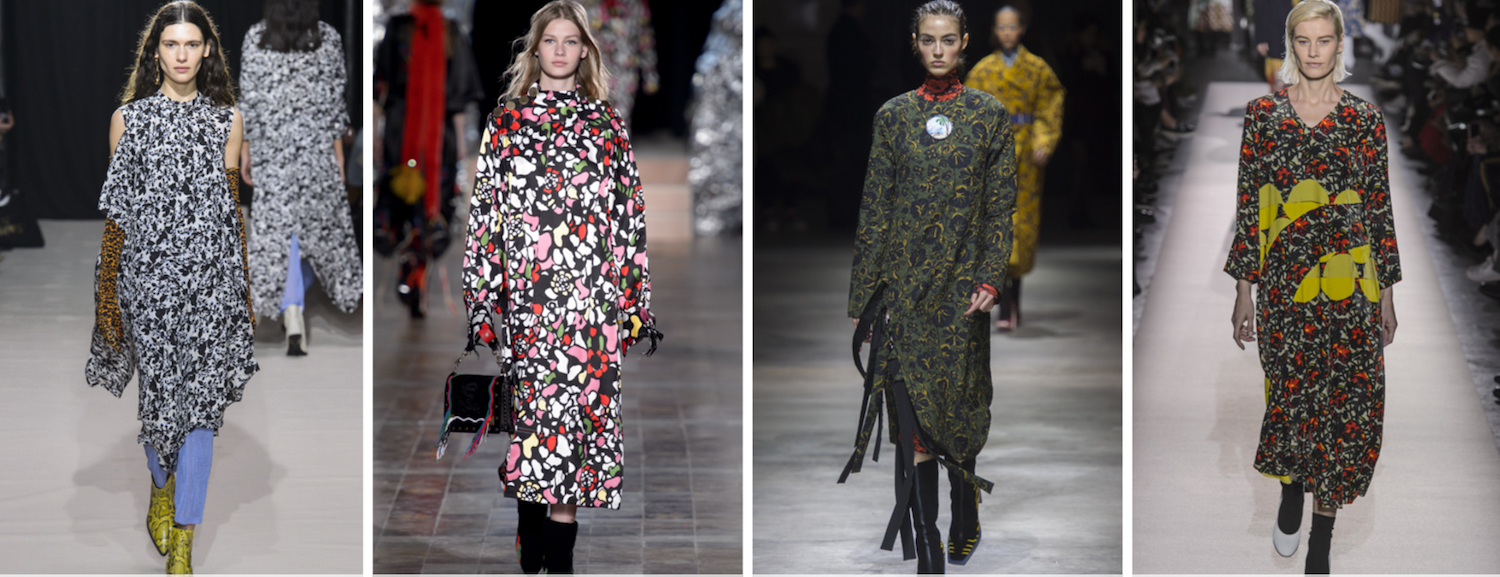Paris fashion week: eclectic collection highlights and key trends

While SCAD students were preparing for finals, fall 2017 ready-to-wear collections were strutting down the stage at Paris fashion week Feb. 28 – March 8.
The featured collections illustrated how various key trends have risen in popularity over the previous year. According to WGSN’s trend analytics for Paris’ fall RTW fashion week, “Volume is an overarching message. Oversized/long sweaters account for 15 percent of the mix, growing their presence by 24 percent YOY (year over year).” Coats, suiting and blazers have also gone up from the previous year.
In regards to trends in accessories, mismatched earrings graced the runways of Balenciaga, Maison Margiela, Elie Saab and Veronique Leroy. Fur was also prevalent in accessories, appearing on the catwalks of Dries Van Noten, Alexander McQueen, Miu Miu, Guy Laroche, Junya Watanabe and more.
The numerous overall trends included soft and romantic, floral facade and menswear. The soft and romantic trend was characterized by pastels, delicately sheer fabrics, embroidery and layers of sumptuous ruffles. For the romantic, look no further than Elie Saab, Nina Ricci and Chloé. Chloé’s collection featured expertly-layered, translucent, airy fabrics, scallop trim accents and pussy-bow neck ties. The collection also touched on a few other prevailing fashion week trends.
In direct opposition to ethereal femininity comes another dominant trend during fall RTW Paris fashion week: menswear. Long boxy blazers over matching loosely tailored trousers were seen at Ffixxed Studios, Nehera, Maison Margiela and Chloé. Dries Van Noten, who celebrated their 100th show at this past fashion week, put an androgynous twist on menswear, pairing the oversized jacket with a billowing skirt flowing out underneath.

This season, floral was shown in a series of abstracted prints, rather than embroidered appliqués or girlish blooms. In the case of Kenzo and Dries Van Noten, the dark shrunken florals are evocative of camouflage or brocade. Christian Wijnants’ take on floral felt like a monochromatic Jackson Pollock, whereas Sonia Rykiel’s pop-art inspired floral trenches resembled discolored stained glass from the distance.
As evident above, each collection was versatile enough not to be pigeon-holed into one predominant trend.
While it’s hard to cover the hundreds of shows that took place over the weeklong affair, Undercover, Comme des Garçons and Sacia were three shows that stood out, either for their extreme impracticality, or their interesting juxtaposition of textures, prints and inspirations.
This collection was reminiscent of a fairytale. Its inspirations were partially rooted in historical Medieval and Renaissance garb with velvet damask prints, tall pointed headdresses, oversized puffy shoulders and ruffles of varying sizes. The collection also featured thick knits, headwear ranging from delicate and butterfly-inspired to harsh and heavy, leather accessories and thin ragged knit dresses distressed with holes.
The designer divided the show into ten different categories. According to Nicole Phelps for Vogue Magazine, “There were 10 in all, starting with aristocrats, ending with the monarchy, and including soldiers, young rebels, the clergy, and a new species.” When asked about the collection, the designer said, “In an ideal world, everybody would be equal.” However, rather than making these different classes equal through dress, the designer celebrates the individuality of the social hierarchy through design.
Comme des Garçons served its usual fare of unwearable with limbless models clad in steely gray wigs and unidentifiable shapes one would have a hard time characterizing as clothing down the runway. The garments were all of similar silhouettes, with the differentiation being in the fabrics. The collection, “The Future of Silhouette,” featured materials evocative of white foam, brown paper bags, silver space-age reflectors and dryer lint.
Sacia’s presentation was characterized by an eclectic range of prints, including zebra, plaid, floral and striped. The prevailing idea behind the show was a willingness to be different, with the designer saying backstage, “The idea is not to be confined to conventions.” The contradictions did not start and end with just the prints. The variety of sartorial highlights from the fall ready-to-wear show included fur trim, sheer plissé, zipper-clad bottoms, embroidered satin nightwear, pleated dresses and puffer bomber jackets.
























